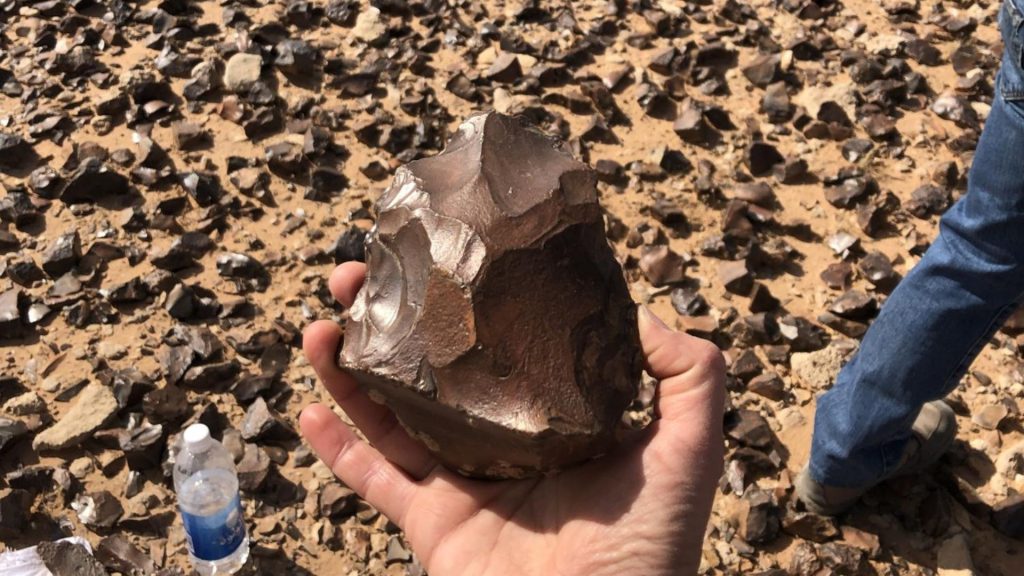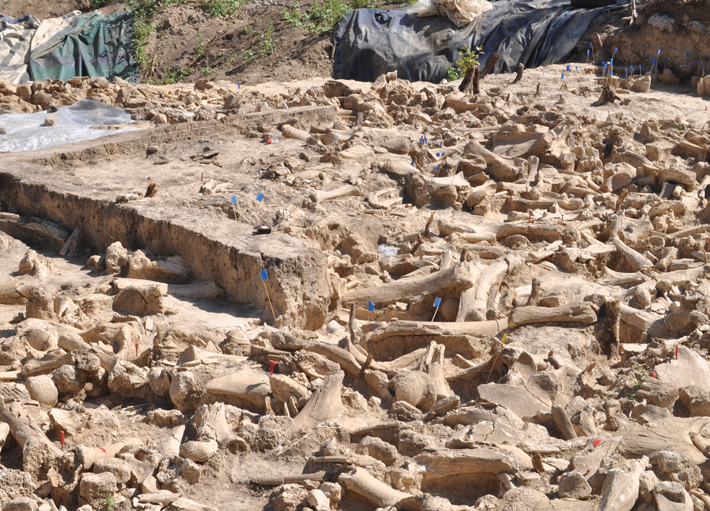‘1.5 million-year-old’ hand axes, 850 artifacts unearthed in Iraq’s dried-up lake – Interesting Engineering

Archaeologists have found a large collection of ancient stone tools in Iraq.21 hours agoa day agoa day agoa day ago2 days ago2 days ago2 days ago2 days ago2 days ago2 days ago13 minutes ago2 hours ago2 hours ago4 hours ago4 hours ago14 hours ago16 hours ago18 hours ago18 hours ago18 hours agoMrigakshi DixitResearchers found over 850 artefacts, including hand axes.VUB
Iraq has a rich historical legacy, but it often goes unnoticed due to conflicts. Archaeologists have found a large collection of ancient stone tools in Iraq. In total, they found over 850 objects in the Al-Shabakah area of the Iraqi Western Desert. Interestingly, all the artifacts were found on the surface of the ground, not buried deep in the soil. These artifacts include ancient hand axes from the Early or Old Paleolithic, also known as the Old Stone Age. The press release suggests these hand axes could be 1.5 million years old.Researchers have been exploring Iraq’s Western Desert to decode its geomorphological history and search for traces of early human life. They say that the Al-Shabakah region holds incredible potential for understanding our ancient ancestors.The exploration was led by Ella Egberts, a geoarchaeologist from the Vrije Universiteit Brussel, to look for archaeological surface material. “The fieldwork was a huge success. Our targeted fieldwork resulted in the discovery of seven Paleolithic sites in an area of 10 by 20 km. One location was selected for a systematic study to determine the spatial distribution of the Paleolithic material and to conduct preliminary technological and typological analyses,” said Egberts. The search for artifacts focused on an area that was once a large lake during the Pleistocene era. It is a now-dry lakebed crossed by ancient wadis or dry riverbeds. The researchers were able to uncover over 850 surface artifacts. The artifacts range from primitive hand axes to more sophisticated Levallois flakes, revealing the evolution of toolmaking technology over time.Levallois flakes are more advanced stone tools associated with the Middle Paleolithic period, roughly from 300,000 to 50,000 years ago.They aim to investigate other sites also, which hold the potential for yielding similar quantities of stone tools.“Based on the distribution of the sites and the advancing understanding of the region’s geomorphological history, there are emerging clues of early human landscape use. In the future, I hope to expand my research to a larger area, systematically sample all the sites, and conduct in-depth technological and typological artifact analysis,” Egberts. “The new insights we bring from Iraq will then be integrated into the broader understanding of human evolution and behavior on the Arabian Peninsula,” Egberts added. Egberts highlighted that archaeological work proceeded much more smoothly than anticipated despite Iraq’s reputation for instability. “Apart from the presence of numerous checkpoints, we were able to carry out our work without any problems. The people are friendly, and it’s actually very nice to work in Iraq,” the press release noted. Egberts’ next step is to secure funding to expand her research, reconstruct the Pleistocene environment, and delve deeper into the mysteries of early human presence in the Western Desert. Earlier in January, a different team of researchers announced the discovery of cuneiform tablets, a game board, and large structural remains at the ancient Mesopotamian site of Kurd Qaburstan, Iraq.It has the potential to significantly enhance our understanding of this Middle Bronze Age city and Mesopotamian history.Stay up-to-date on engineering, tech, space, and science news with The Blueprint.By clicking sign up, you confirm that you accept this site’s Terms of Use and Privacy PolicyMrigakshi Dixit Mrigakshi is a science journalist who enjoys writing about space exploration, biology, and technological innovations. Her work has been featured in well-known publications including Nature India, Supercluster, The Weather Channel and Astronomy magazine. If you have pitches in mind, please do not hesitate to email her.a day agoa day agoa day agoa day agoPremiumIE PROFollow
Source: https://interestingengineering.com/culture/1-5-million-year-old-hand-axes-discovered-iraq






